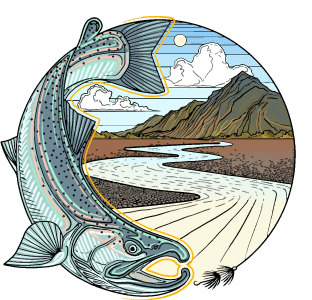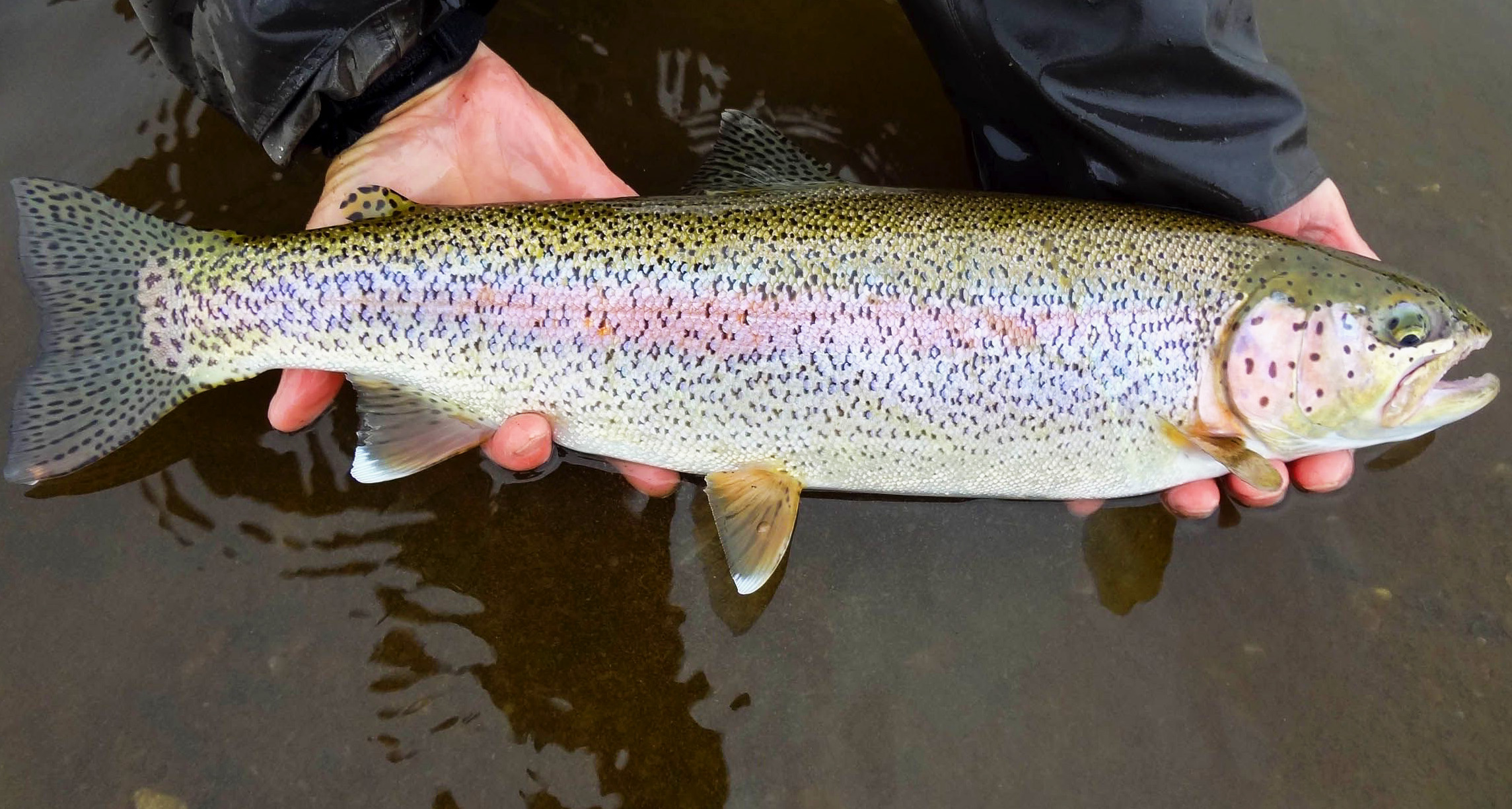
Ive never landed a bird before and should have seen this coming. The gravel bar behind me is covered with gulls and terns, their feeding frenzy coinciding with each unpredictable burst of sockeye smolt downstream. I lean my rod back, grab the line in my free hand, and timidly pull the bird in kite-like before floundering in attempted grabbing motions. Once in hand though, the warmth of its body feels great (I hadnt noticed how raw and wet my hands had become) and the release relatively uneventful - until the surreal happens. Acting in unison, the entire avian fleet on the gravel behind me circles-up to join my freshly released hand-warmer and forms an angry, squawking vortex circling directly over my head. Minutes feel like hours as I stare up in a strange mixture of amazement and vulnerability, ready to swing my flyrod in self-defense or drop it and cover my eyes and ears if necessary.

No one goes to Bristol Bay to catch birds, but that incident stands out in my memory, a reminder of the scale and vitality of the early season Naknek River fishery. Its a world apart from the timber-strewn and intimate streams of my home waters of Southeast Alaska, and it should be on everyones list of places to go. It has big fish feeding on the surface at times, perfect runs for swinging flies at others, and ease of access that make it more accessible than most people imagine.
The River & Fishing
The Bristol Bay region is known for its massive sockeye returns, perhaps the healthiest native runs on Earth, and the Naknek has one of the larger annual returns in the area. These immense sockeye runs, along with significant numbers of coho and king salmon, provide an abundance of food for the resident trout, char, and grayling. Eggs, flesh, smolt and fry all contribute to the diet at different times of the year, and this helps sustain some of the largest rainbow trout in Alaska.

The Naknek River is huge by Southeast Alaska standards, running westward for over 20 miles before reaching the saltwaters of Bristol Bay. At times the water has a tinge of glacial blue from the many glacial tributaries entering into its massive headwater, the thirty-plus mile Naknek Lake. Most of the trout fishing takes place in the first 9 miles of outflow though, in close proximity to the town of King Salmon, and falling within the boundaries of Katmai National Park and Preserve.
In the early summer, before the bulk of the salmon arrive to the river system, massive numbers of sockeye smolt head for saltwater. A 1993 study by the Alaska Department of Fish and Game, for example, estimated over 53 million total sockeye salmon smolt made their way down the Naknek River that season, with peak daily counts of over 5 to 6 million fish. If you hit it right, this can be a mind-boggling fishing experience as the visual spectacle of the feeding frenzy is entirely unique.
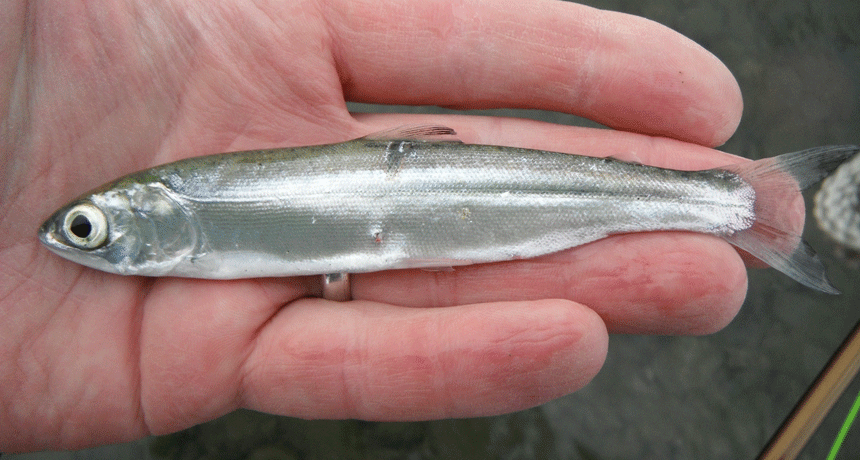
Rainbows averaging 18 - 24 inches show up in waves, hunting in packs while chasing their prey downstream, and there are certainly larger ones in the mix. As the schools swim by, you can see the backs of fish breaking the surface in aggressive swirls, sometimes within a rod length of where you stand, and water that seemed vacant a minute ago is suddenly teeming with life. Attempting to have your fly stand out from among the naturals can be maddening, and getting a grab in the fast moving current is an unforgettable experience. Nothing about it is easy, but its always a thrilling, challenging, intense and unpredictable visual experience. (Pro-tip: Dont use a size 2 blue & white deceiver that floats temporarily on the surface, unless you need a visit from a feathered hand-warmer.)
Fishing during smolt activity is action packed, but never a guarantee. Variables like light level and water temperature can influence the timing of the migrations. Fishing the low light of early or late hours can improve the odds of catching a smolt bust, but sometimes it occurs under the high mid-day sun. The aforementioned birds will usually let you know whether or not its happening. Being ready for it is a mix of anticipation, gamble that its going to happen, and chance that youll be in the right place at the right time.

If youre not casting into visibly feeding fish, the long, wide runs that make the upper portions of the Naknek are also perfect water for swinging flies. Large sculpin, leeches and attractor patterns can be productive at times, and the combination of tight, down-and-across presentation of the fly, strong current, and healthy fish can result in some truly violent takes. Its not uncommon to have fish take you quickly into your backing in a single grab-and-run motion.
The Naknek is also unique in that its home to a population of fish that leave their lake environs and swim downstream to spawn in the early spring, so the timing of this event is another variable that plays into fishing. The Department of Fish and Game closes the upper section of river from early April through early June to protect these spawning fish so they are not targeted during this critical time. On late spawn years though, these larger fish can linger to feed and regain strength before returning to the lake. Large leeches and attractor patterns can also entice these red-sided fish that look remarkably like a steelhead, and can sometimes be of trophy size.

One important thing to know about fishing the Naknek is that its not easy. There are several lodges based in the area, as well as a high percentage of the resident population that enjoy fishing the river, which means plenty of fisherman. While theres lots of room on the river, the pressure is significant, and, along with the abundance of natural food, it can make for some very selective trout and challenging fishing at times. The wide open terrain of the area also guarantees strong wind too, making casting a frequent challenge. But if all this sounds good to you, its a fantastic place to be introduced to the unique fisheries of Bristol Bay.
Getting There
"Move back, so people can get their bags!" an airline employee shouts in frustration over the top of the crowd.
No one is listening. Its not an option if you want to get to your gear before its completely buried in fish boxes and duct-taped coolers. There are too many people in the one-room airport to provide for any efficiency, and after a few short hours of travel through the relative comfort of the Juneau and Anchorage airports, Ive landed in what feels like a developing nation a world apart from Southeast Alaska. The bags that were all waiting for eventually pour in through the roll-up door, an industrial mix of taped-up coolers, fish boxes, and dry bags with the requisite rations, tools, and equipment that are either locally unavailable or too expensive. In the midst of the chaos, a minority of sport fishermen - myself included - scramble to retrieve rod tubes, dry bags and suitcases of all shapes and sizes.
The King Salmon, Alaska airport in mid-June is a frenetic place, and its hard to be mentally prepared for the chaos on a first time visit. Commercial fisherman, greet each other in excited anticipation for the upcoming Chinook and Sockeye salmon seasons. Its a $1.5 Billion fishery and the defining activity for the region, if not the state, and you can definitely feel its presence on arrival, along with that of the related processing industry.
The accessibility of the King Salmon airport, and its proximity to the heart of Bristol Bay, make the Naknek easier and more affordable to get to than many remote fishing destinations though. This means that in the long days of summer, its possible to leave Juneau, or even Seattle, and be fishing that same day. Alaska Air flies full-size jets there daily throughout the summer, and, with some advanced planning, moderate fairs and mileage tickets are frequently available. If you wait too long though, price skyrockets as availability shrinks, so its best to plan well in advance.
If you do make the trip, its worth your while to fly Alaska Air and avoid its smaller partner lines. This will greatly improve the odds of all your gear getting there and back without hassle. On my second trip to the area, for example, I witnessed well over one thousand pounds of gear left on the tarmac in Anchorage, the direct result of all the additional boxes of equipment checked in for the up-coming commercial fishing season. Also, despite being an official partner airline, Alaskas Club 49 perk of 3 bags for in-state travel is never honored on departure, and they have no problem charging additional baggage fees. Regardless of who gets you there, its always a good idea to carry on your rods, reels, flies, and rain gear to ensure you have what you need when you need it. Sometimes it can be days before the smaller carriers get caught up on their deliveries.
Staying There
The size and scale of the Naknek River and its surrounding terrain make it virtually impossible to fish on your own, so having a guide is a necessity. Lodges on the river all have their own guides and range from high-end luxury accommodations in pristine settings, complete with private float planes, to small rustic cabins.
At the top end of the price range youll be flying to a different place each day, essentially living the Bristol Bay fishing dream. This looks amazing, and some of the area lodges in this category include Crystal Creek, Bear Trail, and Rapids Camp, all of which have great reputations. A quick Internet search will bring up those operations and allow you to compare offerings for yourself. Theyll most likely provide a detailed equipment list for you or provide everything you need on arrival.
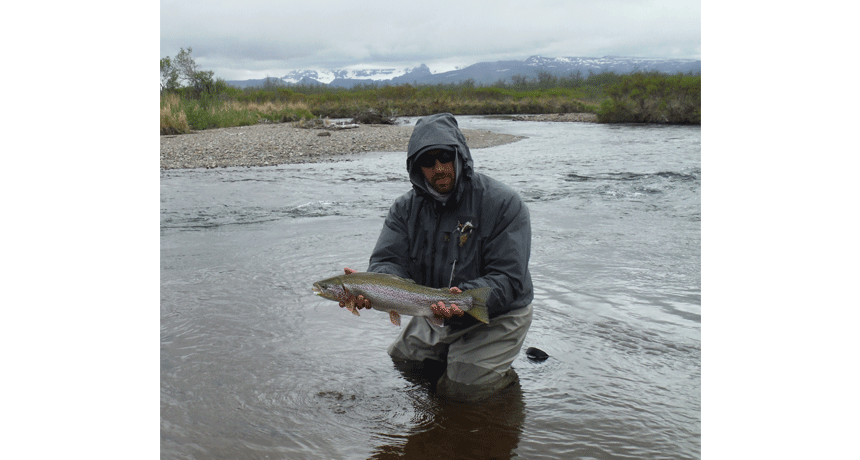
If like me youre on a more limited budget, there are other options, and it will pay to do some thorough research in advance. A few operators appear to fish solely out of their boats, and often spin fish for a major part of their day, so if you are set on wading and swinging flies you may be disappointed to find out thats not in the plan. There are many good guides in the area, so theres no need to settle for something you dont want.
One unique option on the Naknek is Rainbow Bend Lodge, which offers a combination of guided or self-guided fishing based on your fishing and boating experience and the current conditions. Their self-catering cabins on the banks of the Naknek are comfortable, within easy reach of both trout and salmon fishing, and their equipment top-notch. Their location on the river offers a wide range of possibilities, too. In late June, for example, its possible to either cast for trout or troll for king salmon (or both) in the same day. Again, do your research well in advance, and talk to them about the conditions and fishing for that time of year. Theyre incredibly knowledgeable, and offer great service and hospitality at a very fair price.
GEAR
My Naknek packing list has a note-to-self that says Use it, dumb#ss!", no doubt born out of a time when I chose not to. Not having the right gear can turn your experience into a miserable one. Temperatures in spring and fall can range from t-shirt weather to winter hat and gloves required, especially if youre spending a lot of time running the river in boats. Strong winds are also a given, so the bottom line is to plan for the worst and bring plenty of insulation, even in June.

The usual list of sundries - sunscreen, rain gear, bug protection - are also a must, as you cant get much in King Salmon. Wading can also be challenging in places, and the water temps cold, so non-leaky waders are a must, and boots with studs of some sort also helpful.
Fishing tackle depends on your preferences. While two-handed rods are a great match for the Naknek, most of the locals on the river fish with single handers. Its hard to cover all the possibilities, but here are some general guidelines, self-derived over the past several years:
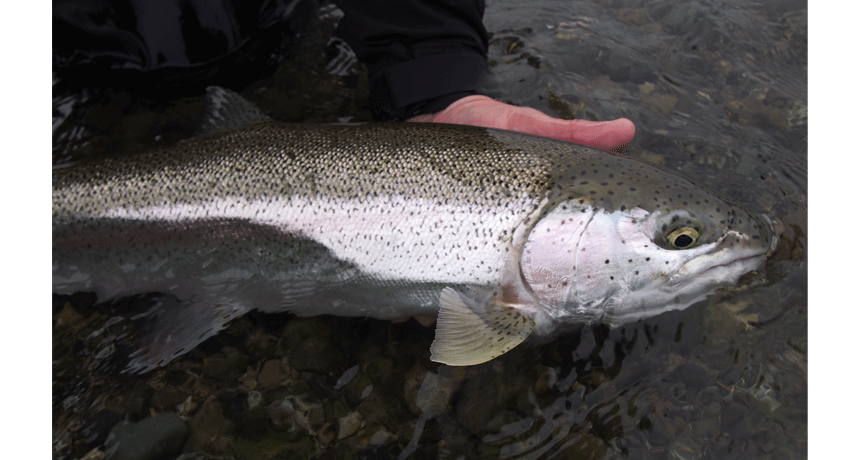
Single-hand set-ups
7-8 weight for Naknek , 5 6 weight for some fly-out options (check with your lodge)
Floating line for smolt fishing
Tips system or integrated sinking shooting head for swinging flies
Leaders and tippet in the 12 to 20 lb range
Flies: poppers, baitfish, leeches, sculpin, leeches, attractors in sizes 2 6, or smaller salmon fry patterns like the Thunder Creek if you are planning on flying out (check with your lodge)
Two-Handed Spey & Switch:
6 to 8 wt rods, 10.5 to 14 ft
Scandi line, or similar such as Airflo's Rage head, for smolt fishing and the wind isn't too bad. A selection of poly leaders to match from Floating - Fast Sink.
Skagit line, or similar, for swinging leeches & sculpin, a selection of 10 15 ft. tips to match such as Rio Medium MOW Tip Kit.
Leaders and tippet in the 12 to 20 lb range

